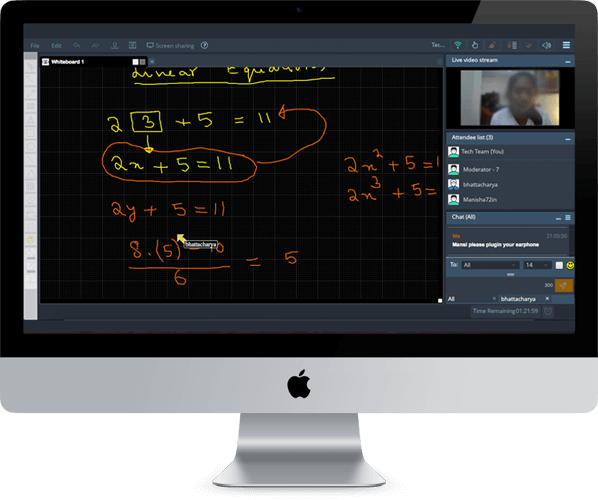Complete PDF & Video Solutions Of I E Irodov Book - Problems in general Physics
IE Irodov’s Problems in general physics are considered as the most complicated and trickiest of its type because of the questions consisting of multiple concepts. The problems of Irodov are recognized as one of the most essentials for IIT-JEE preparation.
In our solutions of IE Irodov’s problems have been discussed in such a way that students will face no difficulty what so ever in understanding till the core of concepts despite their intellect level.
Topic-Wise Important Questions in IE Irodov Book:
All topic-wise solutions of IE Irodov Physics are available here, you can directly download PDF Files & Video Solutions.
1. PHYSICAL FUNDAMENTALS OF MECHANICS (I E Irodov)
Newton brought about a new era in our understanding of the physical world through his famous equation F= ma and the law of gravity. These laws have successfully predicted the behavior of all phenomena from the microscopic world to the astronomical world!
I E Irodov Kinematics (PDF & Video Solutions)
Kinematics is significant from the perspective of scoring high in IIT JEE. Weightage of Kinematics is 5 % in JEE Main Exam. 2 to 3 questions asked every year in JEE Main exam from Kinematics.
|
I E Irodov Questions Of Kinematics |
I E Irodov Solutions |
|
I E Irodov Physical Fundamentals of Mechanics (Kinematics) Q. 1.3 |
|
|
I E Irodov Physical Fundamentals of Mechanics (Kinematics) Q. 1.13 |
|
|
I E Irodov Physical Fundamentals of Mechanics (Kinematics) Q. 1.26 |
|
|
I E Irodov Physical Fundamentals of Mechanics (Kinematics) Q. 1.31 |
|
|
I E Irodov Physical Fundamentals of Mechanics (Kinematics) Q. 1.43 |
I E Irodov The Fundamental Equation of Dynamics (PDF & Video Solutions)
The fundamental equations of Dynamics is one of the important chapters in JEE Main and JEE Advanced Physics syllabus.
|
I E Irodov Questions Of The fundamental equations of Dynamics |
I E Irodov Solutions |
|
I E Irodov Physical Fundamentals of Mechanics (The fundamental equations of Dynamics) Q. 1.62 |
|
|
I E Irodov Physical Fundamentals of Mechanics (The fundamental equations of Dynamics) Q. 1.71 |
|
|
I E Irodov Physical Fundamentals of Mechanics (The fundamental equations of Dynamics) Q. 1.77 |
|
|
I E Irodov Physical Fundamentals of Mechanics (The fundamental equations of Dynamics) Q. 1.104 |
|
|
I E Irodov Physical Fundamentals of Mechanics (The fundamental equations of Dynamics) Q. 1.113 |
I E Irodov Laws of Conservation of Energy, Momentum, and Angular (PDF & Video Solutions)
Laws of conservation of Energy, Momentum and Angular Momentum' is significant from the perspective of scoring high in IIT JEE. 2 to 3 questions asked every year in JEE Main exam from Laws of conservation of Energy, Momentum and Angular Momentum.
|
I E Irodov Questions Of Laws of Conservation of Energy, Momentum and Angular Momentum |
I E Irodov Solutions |
|
I E Irodov Physical Fundamentals of Mechanics (Laws of Conservation of Energy, Momentum and Angular Momentum) Q. 1.123 |
|
|
I E Irodov Physical Fundamentals of Mechanics (Laws of Conservation of Energy, Momentum and Angular Momentum) Q. 1.129 |
|
|
I E Irodov Physical Fundamentals of Mechanics (Laws of Conservation of Energy, Momentum and Angular Momentum) Q. 1.136 |
|
|
I E Irodov Physical Fundamentals of Mechanics (Laws of Conservation of Energy, Momentum and Angular Momentum) Q. 1.155 |
|
|
I E Irodov Physical Fundamentals of Mechanics (Laws of Conservation of Energy, Momentum and Angular Momentum) Q. 1.183 |
I E Irodov Universal Gravitation (PDF & Video Solutions)
In mechanics, gravity, also known as gravitation, is the universal force of attraction acting between all matter. All bodies on Earth have a weight, or downward force of gravity, proportional to their mass which the mass of Earth exerts upon them.
|
I E Irodov Questions Of Universal Gravitation |
I E Irodov Solutions |
|
I E Irodov Physical Fundamentals of Mechanics (Universal Gravitation) Q. 1.210 |
|
|
I E Irodov Physical Fundamentals of Mechanics (Universal Gravitation) Q. 1.216 |
|
|
I E Irodov Physical Fundamentals of Mechanics (Universal Gravitation) Q. 1.221 |
|
|
I E Irodov Physical Fundamentals of Mechanics (Universal Gravitation) Q. 1.227 |
|
|
I E Irodov Physical Fundamentals of Mechanics (Universal Gravitation) Q. 1.233 |
I E Irodovynamics of a Solid Body (PDF & Video Solutions)
The dynamics of a rigid body system are defined by the kinematics laws and the application of Newton's second law (kinetics) or their Lagrangian mechanics' derivative form.
|
I E Irodov Questions Of Dynamics of a Solid Body |
I E Irodov Solutions |
|
I E Irodov Physical Fundamentals of Mechanics (Dynamics of a Solid Body) Q. 1.234 |
|
|
I E Irodov Physical Fundamentals of Mechanics (Dynamics of a Solid Body) Q. 1.241 |
|
|
I E Irodov Physical Fundamentals of Mechanics (Dynamics of a Solid Body) Q. 1.258 |
Video Solutions |
|
I E Irodov Physical Fundamentals of Mechanics (Dynamics of a Solid Body) Q. 1.265 |
|
|
I E Irodov Physical Fundamentals of Mechanics (Dynamics of a Solid Body) Q. 1.279 |
I E Irodov Elastic Deformations of a Solid Body (PDF & Video Solutions)
In elastic deformation, the distribution on a microscopic scale of the internal energy is irrelevant to the problem of macroscopic deformation. So the internal energy of a fictitious homogeneous elastic continuum can be replaced by the internal energy.
|
I E Irodov Questions Of Elastic Deformation of a Solid Body |
I E Irodov Solutions |
|
I E Irodov Physical Fundamentals of Mechanics (Elastic Deformation of a Solid Body) Q. 1.296 |
|
|
I E Irodov Physical Fundamentals of Mechanics (Elastic Deformation of a Solid Body) Q. 1.306 |
|
|
I E Irodov Physical Fundamentals of Mechanics (Elastic Deformation of a Solid Body) Q. 1.308 |
|
|
I E Irodov Physical Fundamentals of Mechanics (Elastic Deformation of a Solid Body) Q. 1.310 |
Video Solutions |
|
I E Irodov Physical Fundamentals of Mechanics (Elastic Deformation of a Solid Body) Q. 1.314 |
Video Solutions |
I E Irodov Hydrodynamics (PDF & Video Solutions)
Hydrodynamics is significant from the perspective of scoring high in IIT JEE. 2 to 3 questions asked every year in the JEE Main exam from Elastic Deformation of a Solid Body. IE Irodov Chapter Hydrodynamics will be of great help to the IIT JEE students.
|
I E Irodov Questions Of Hydrodynamics |
I E Irodov Solutions |
|
I E Irodov Physical Fundamentals of Mechanics (Hydrodynamics) Q. 1.324 |
|
|
I E Irodov Physical Fundamentals of Mechanics (Hydrodynamics) Q. 1.328 |
|
|
I E Irodov Physical Fundamentals of Mechanics (Hydrodynamics) Q. 1.335 |
|
|
I E Irodov Physical Fundamentals of Mechanics (Hydrodynamics) Q. 1.336 |
|
|
I E Irodov Physical Fundamentals of Mechanics (Hydrodynamics) Q. 1.339 |
I E Irodov Relativistic Mechanics (PDF & Video Solutions)
For physics, relativistic mechanics applies to special relativity (SR) and general relativity (GR) compatible mechanics. It provides a non-quantum mechanical description of a particle or fluid system in cases where the velocity of moving objects is comparable to the velocity of light c.
|
I E Irodov Questions Of Relativistic Mechanics |
I E Irodov Solutions |
|
I E Irodov Physical Fundamentals of Mechanics (Relativistic Mechanics) Q. 1.345 |
|
|
I E Irodov Physical Fundamentals of Mechanics (Relativistic Mechanics) Q. 1.350 |
|
|
I E Irodov Physical Fundamentals of Mechanics (Relativistic Mechanics) Q. 1.359 |
|
|
I E Irodov Physical Fundamentals of Mechanics (Relativistic Mechanics) Q. 1.378 |
|
|
I E Irodov Physical Fundamentals of Mechanics (Relativistic Mechanics) Q. 1.388 |
2. THERMODYNAMICS AND MOLECULAR PHYSICS (I E Irodov)
Thermodynamics and molecular physics both are the most important topics for JEE preparation. IE Irodov Chapter Relativistic Mechanics will be of great help to the IIT JEE students.
I E Irodov Equation of the Gas State. Processes (PDF & Video Solutions)
The condition of state for a substance gives the extra data required to figure the measure of work that the substance does in making a progress starting with one balance state then on to the next along some predetermined way.
|
I E Irodov Questions Of Equation of the Gas State, Processes |
I E Irodov Solutions |
|
Thermodynamics and Molecular Physics Equation of the Gas State, Processes Q. 2.7 |
|
|
Thermodynamics and Molecular Physics Equation of the Gas State, Processes Q. 2.18 |
|
|
Thermodynamics and Molecular Physics Equation of the Gas State, Processes Q. 2.2 |
|
|
Thermodynamics and Molecular Physics Equation of the Gas State, Processes Q. 2.23 |
I E Irodov The First Law of Thermodynamics - Heat Capacity (PDF & Video Solutions)
Heat is the flow of energy starting with one object then onto the next caused by a distinction in temperature. C = Q/delta T. While we will regularly utilize heat capacity, heat capacities are like mass, that is their value depend on the material and on the amount of it there is.
|
I E Irodov Questions Of The first Law of Thermodynamics, Heat Capacity |
Video Solutions |
|
Thermodynamics and Molecular Physics The first Law of Thermodynamics, Heat Capacity Q. 2.29 |
|
|
Thermodynamics and Molecular Physics The first Law of Thermodynamics, Heat Capacity Q. 2.32 |
|
|
Thermodynamics and Molecular Physics The first Law of Thermodynamics, Heat Capacity Q. 2.35 |
|
|
Thermodynamics and Molecular Physics The first Law of Thermodynamics, Heat Capacity Q. 2.46 |
|
|
Thermodynamics and Molecular Physics The first Law of Thermodynamics, Heat Capacity Q. 2.6 |
I E Irodov Kinetic Theory of Gases, Boltzmann's Law and Maxwell's (PDF & Video Solutions)
The kinetic molecular theory is utilized to decide the motion of a molecule of ideal gas under a specific arrangement of conditions. however, when take a look at a mole of ideal gas, it is difficult to quantify the velocity of each molecule at every instant of time.
|
I E Irodov Questions Of "Kinetic Theory of Gases. Boltzmann's Law and Maxwell's |
Video Solutions |
|
Thermodynamics and Molecular Physics Kinetic Theory of Gases, Boltzmann's Law and Maxwell's |
|
|
Thermodynamics and Molecular Physics Kinetic Theory of Gases, Boltzmann's Law and Maxwell's |
|
|
Thermodynamics and Molecular Physics Kinetic Theory of Gases, Boltzmann's Law and Maxwell's |
|
|
Thermodynamics and Molecular Physics Kinetic Theory of Gases, Boltzmann's Law and Maxwell's |
I E Irodov The Second Law of Thermodynamics, Entropy (PDF & Video Solutions)
The Second Law of Thermodynamics Entropy is very important from the perspective to maximum score in IIT JEE. The Second Law of Thermodynamics expresses that the condition of entropy of the whole universe, as an isolated system, will consistently increment after some time.
|
I E Irodov Questions Of The Second Law of Thermodynamics,Entropy |
I E Irodov Solutions |
|
Thermodynamics and Molecular Physics The Second Law of Thermodynamics, Entropy Q. 2.117 |
|
|
Thermodynamics and Molecular Physics The Second Law of Thermodynamics, Entropy Q. 2.125 |
|
|
Thermodynamics and Molecular Physics The Second Law of Thermodynamics, Entropy Q. 2.14 |
|
|
Thermodynamics and Molecular Physics The Second Law of Thermodynamics, Entropy Q. 2.147 |
|
|
Thermodynamics and Molecula |






